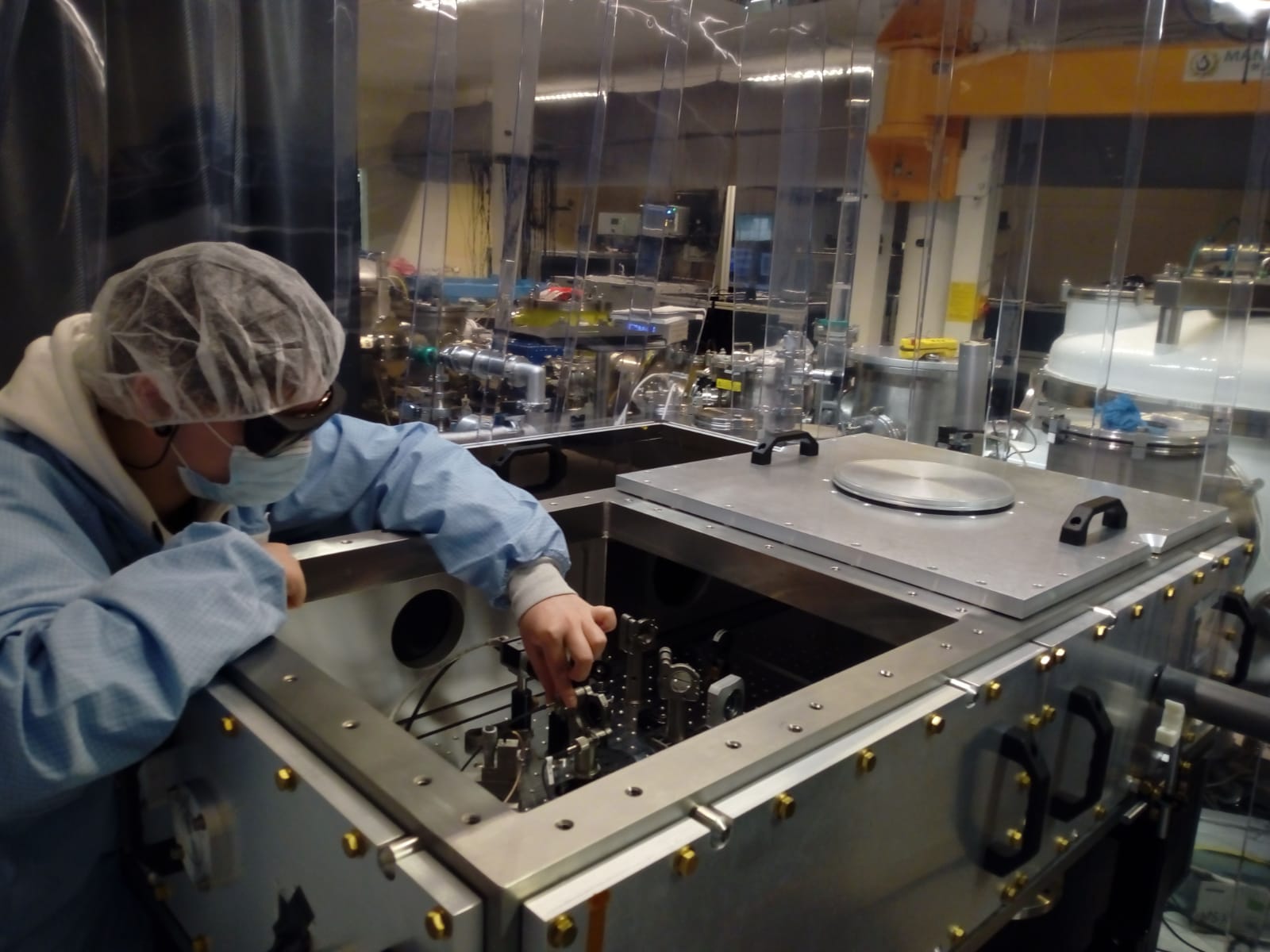
The ANR DeLLight project aims to measure a decrease in the speed of light in a vacuum when the latter is subjected to an intense external electromagnetic field. This measurement would show experimentally that the electromagnetic constants of the vacuum (speed of light, permeability, permittivity) are not absolute constants but can vary on a macroscopic scale if an external field is applied to the vacuum. The most sensitive current experiments use a magnetic field of a few tesla to observe a birefringence effect in vacuum. However, their sensitivity remains too low to observe the phenomenon, which requires the use of higher fields.
The DeLLight project, which involves the PHE and Physics Accelerators Poles of IJCLab's, consists of using the intense femto-second laser pulses from the Laserix platform as an external field. These pulses, with an energy of about 2 joules, last 30 femtoseconds with a repetition rate of 10 hertz. These focused "pump" pulses deliver fields of approximately 105 tesla, and thus locally create an optical index gradient of the vacuum, constituting a kind of optical prism in the vacuum.We then seek to measure the refraction (deflection) of a probe consisting of a focused femtosecond pulse of low intensity which crosses this index gradient at the same time. The refraction signal is amplified using a Sagnac interferometer. This effect is similar to the optical Kerr effect in an optical medium and can also be compared to an optical mirage effect in vacuum.
The DeLLight team just published an article in Phys. Rev. A, presenting the experience, the theoretical and numerical calculation of the expected QED signal, as well as the first results of the DeLLight prototype. Thanks to these results, the experimental limitations are better known and a first sensitivity measurement was able to be carried out.























